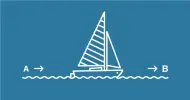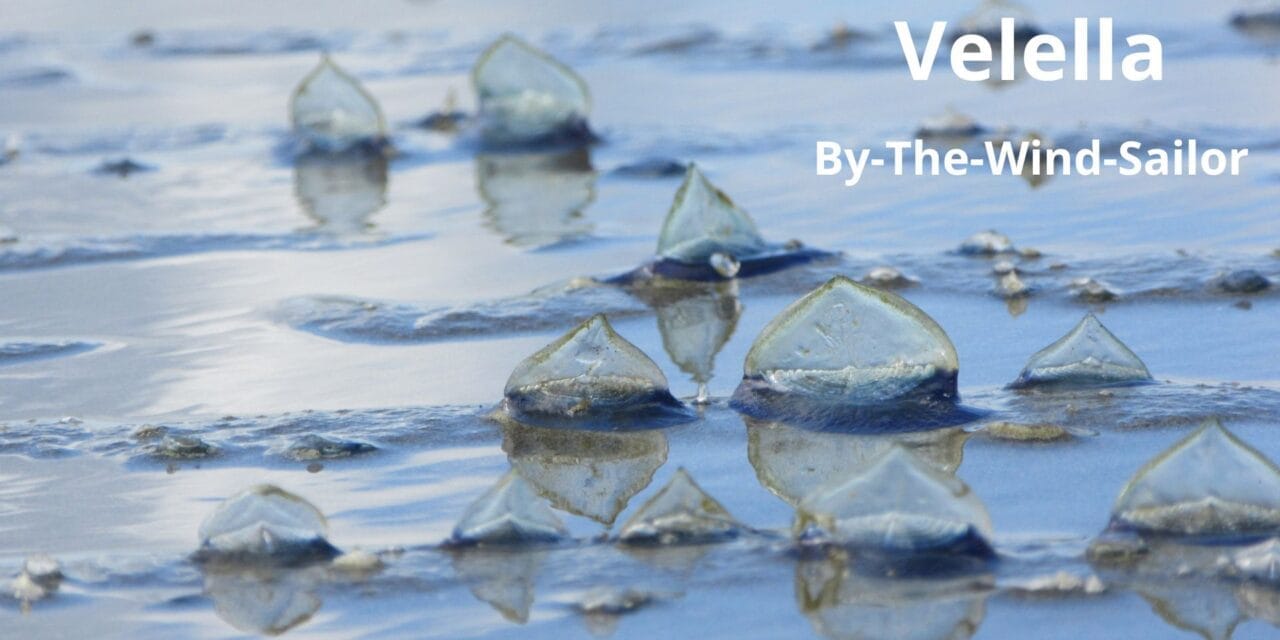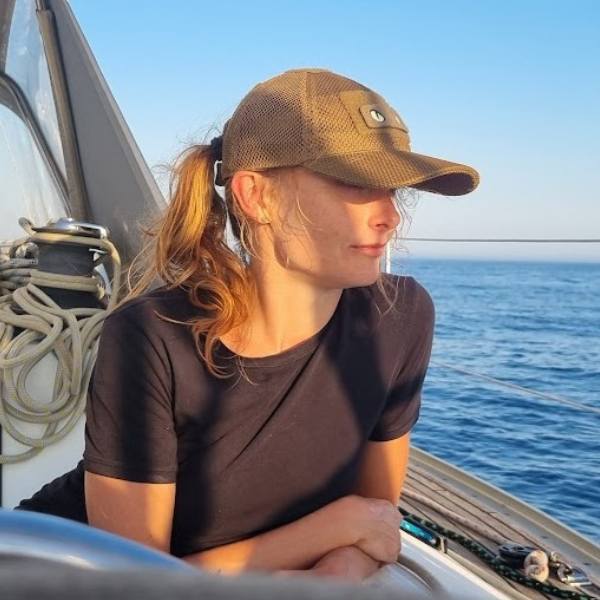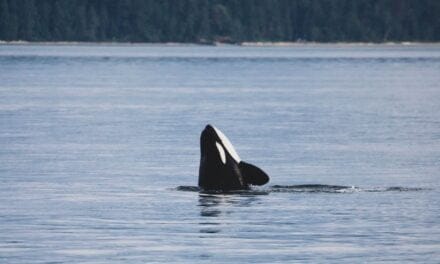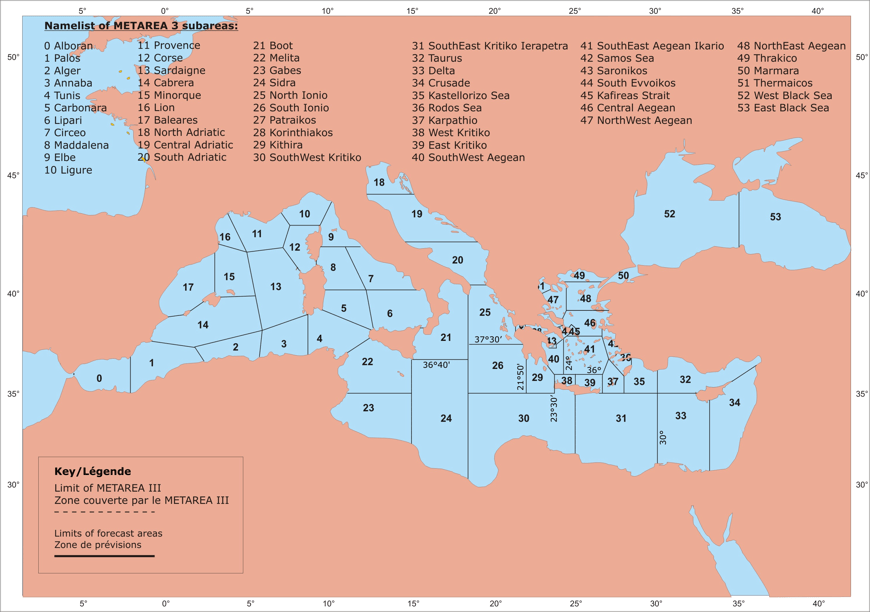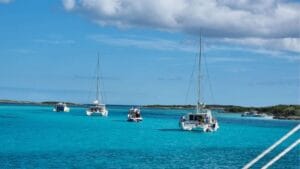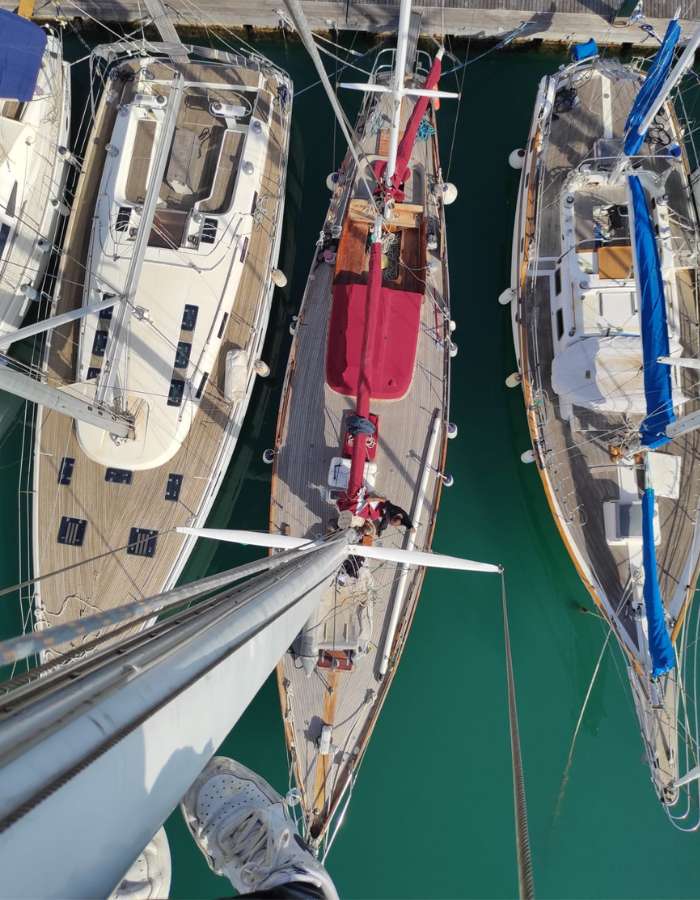By-the-Wind Sailor (Velella) – A Marine Marvel for Sailors
Introduction
If you’ve sailed the open oceans, you might have come across an unusual marine organism called the Velella velella, also known as the By-the-Wind Sailor. These small, free-floating creatures can be found drifting in large groups across warm waters, propelled by their unique sail-like structures. While Velella may resemble jellyfish, they belong to the Hydrozoa class, with fascinating biological features that set them apart. Understanding the Velella is not only an enriching experience for sailors but also provides insight into marine ecosystems.
What is a By-the-Wind Sailor?
The Velella velella, commonly referred to as By-the-Wind Sailor, is a colonial hydrozoan species, closely related to the notorious Portuguese Man o’ War. These organisms are often mistaken for jellyfish due to their gelatinous appearance, but they are, in fact, composed of numerous polyps working together as a colony. This allows Velella to function as a single organism despite being made up of individual animals.
| Species Information | Details |
|---|---|
| Scientific Name | Velella velella |
| Common Name | By-the-Wind Sailor |
| Class | Hydrozoa |
| Habitat | Warm open oceans, surface waters |
| Size | 2–7 cm |
| Diet | Plankton, small marine organisms |
| Predators | Nudibranchs, sunfish |
| Notable Feature | Small sail structure used for wind navigation |
These creatures float on the water’s surface, and their small sail is key to their movement. Depending on the sail’s orientation, the Velella are carried either left or right, driven by the wind. Despite being pelagic organisms, they cannot actively swim but drift where the wind and currents take them.
Marine Movement: The Sail that Sets Them Apart
The most distinguishing feature of the Velella is their transparent sail, which allows them to “catch the wind” and navigate the surface of the ocean. The sail, which is set diagonally along the animal’s disc-shaped body, determines the direction in which they float. Winds from the left side push some colonies in one direction, while winds from the right push others in the opposite direction. This remarkable ability to use wind patterns enables Velella to disperse over vast oceanic areas, although they sometimes fall victim to strong onshore winds that wash them ashore.
While not dangerous to humans, sailors may encounter Velella washed up in massive numbers on beaches. These strandings typically happen following stormy weather or sustained periods of strong onshore winds. Their stinging cells (nematocysts) are generally harmless to humans, although some individuals may experience mild skin irritation.
By-the-Wind Sailor: Indicator of Oceanic Conditions
For sailors, the presence of Velella offers useful information about local ocean conditions:
- Water Temperature: Velella thrive in warmer waters. Spotting them in large numbers can indicate that you are navigating through or towards tropical or subtropical seas.
- Wind Patterns: Since Velella rely on wind to move, observing their orientation and drift can give you a sense of prevailing wind patterns. They tend to accumulate in areas where steady winds blow them in one direction.
- Weather Indicators: When masses of Velella are washed ashore, this can sometimes foreshadow a shift in weather conditions, particularly if onshore winds persist after a period of calm. Additionally, their strandings often occur after stormy weather, which could be a signal of changing atmospheric conditions.
Strandings: A Spectacle of Nature
During certain seasons, particularly late summer and autumn, massive Velella strandings can be observed along the shores of temperate and tropical regions. Thousands of these tiny sailors can accumulate on beaches, creating a fascinating yet slightly eerie sight.
| Event | Details |
|---|---|
| Common Stranding Locations | British Isles, West Coast of North America, Atlantic, Mediterranean |
| Peak Seasons | Summer to Autumn |
| Causes of Strandings | Onshore winds, seasonal storms, changes in currents |
| Impact on Ecosystems | Minimal; decomposes quickly, providing nutrients to beach ecosystems |
A Velella stranding is usually harmless, but their sheer numbers can be overwhelming. They decompose quickly, leaving little more than translucent remains and a faint oceanic smell in their wake. However, mass strandings are also an opportunity for researchers and sailors alike to study marine patterns and ecosystem health.
Velella in the Food Chain
Though Velella may seem insignificant, they play an important role in the marine ecosystem. They feed on zooplankton, capturing prey using their short tentacles lined with stinging cells. In turn, Velella serve as prey for several marine species, including sunfish and various species of nudibranchs.
Their floating nature also provides shelter and feeding opportunities for small fish, which seek refuge beneath their discs. This interaction highlights how even the smallest marine organisms contribute to the ocean’s food web, supporting a range of species from the open ocean to the coastal shallows.
Interesting Facts About Velella
- The orientation of their sail determines which direction they will float; some have sails tilted to the right, others to the left.
- Though related to the Portuguese Man o’ War, their sting is much weaker and generally harmless to humans.
- They are not true jellyfish but belong to the Hydrozoa class, sharing traits with other colonial organisms.
- The largest recorded strandings involve tens of thousands of individuals along stretches of coastline.
- Velella is also known as the “blue sailor” due to its distinctive blue underside, which helps camouflage it from predators when viewed from below.
Sailing Through Velella Waters: What to Know
Encountering Velella in large numbers may be a sign that you are sailing in nutrient-rich waters, ideal for plankton and other small marine organisms. While they do not pose a threat to your vessel, their presence often coincides with good sailing conditions in terms of wind and temperature. Keep in mind, though, that significant strandings along coastal regions can sometimes indicate stormy weather, as these creatures are frequently pushed ashore by strong winds.
Further Exploration and Learning
For sailors keen on learning more about oceanic navigation and marine life, here are some useful resources:
- Cornwall Wildlife Trust on Marine Species
- National Geographic: Portuguese Man-of-War
- By-the-wind-sailor (Velella velella)
For practical sailing guidance, read our related articles:
- Navigational Instruments for Sailors
- Sailing Across the Atlantic
- Is Yacht Delivery Safe? Guide for Boat Owners
Summary
The Velella velella, or By-the-Wind Sailor, is a fascinating marine organism that adds to the rich tapestry of ocean life sailors encounter. While small and seemingly fragile, they play an important role in the marine food chain and serve as indicators of oceanic and atmospheric conditions. As you navigate the world’s seas, be mindful of these ocean drifters—whether floating peacefully alongside your boat or washed ashore in their thousands after a storm.
For more details on ocean ecosystems and sailing tips, explore our internal links and deepen your understanding of what lies beneath the surface.
